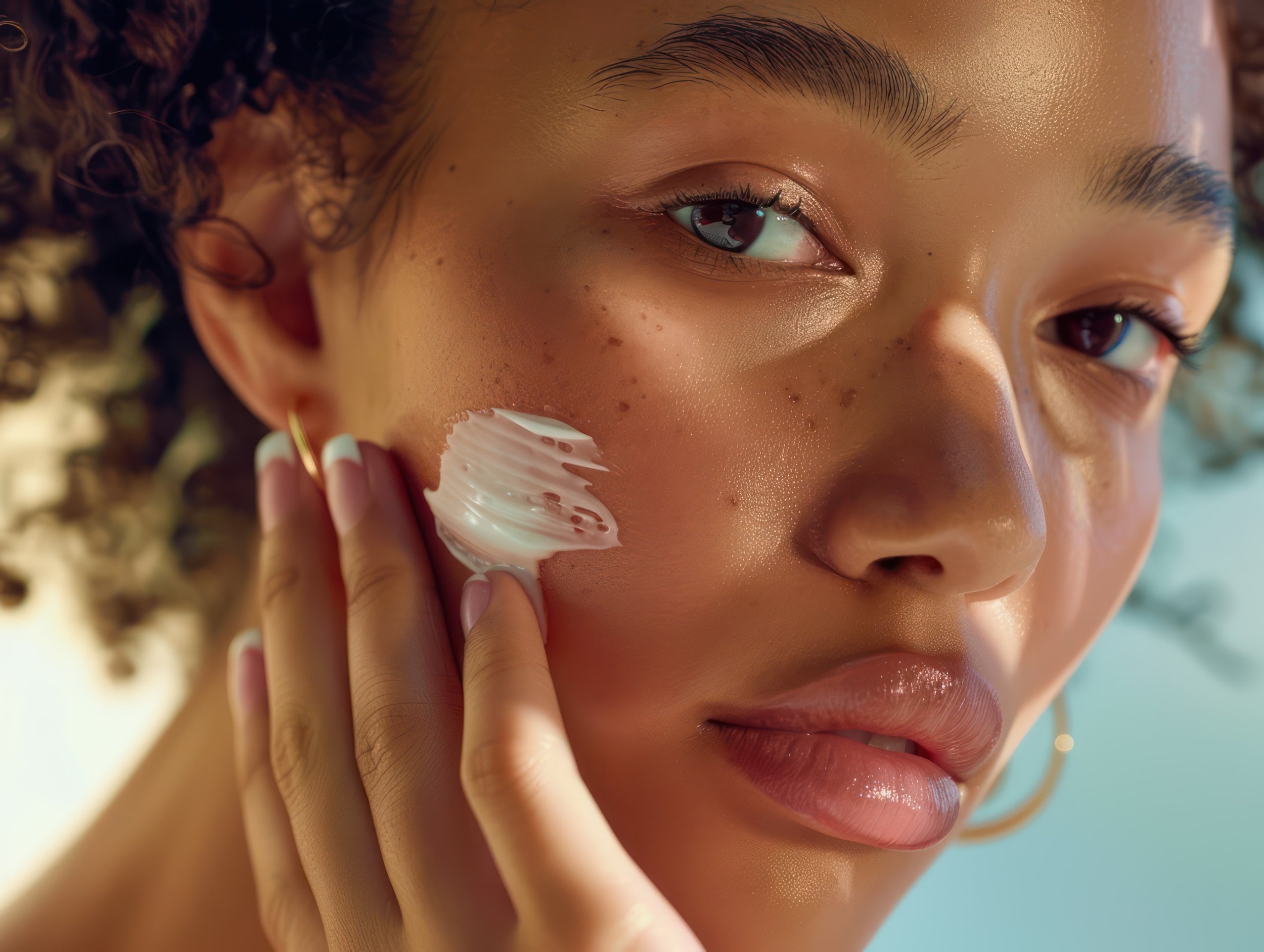Summer Skin Missteps: Habits That Cause Sun Damage (and How to Break Them)
Sunshine might feel like a summer blessing, but too much sun can silently damage your skin—even when you think you’re protected. The danger comes from the sun's rays, which include ultraviolet radiation that can harm your skin. From the beach to the backyard, sneaky habits and misinformation leave your skin vulnerable to UV rays, sun damage, and even skin cancer. While your skin soaks up vitamin D, it can also suffer from premature aging, discoloration, and breakdown of skin elasticity caused by unfiltered sun's ultraviolet (UV) radiation. The good news? These habits are fixable. In this guide, we’ll expose the most common summer skin sins and teach you how to break them—beautifully and effectively.
Summer Skin Misstep #1: Skipping SPF on Cloudy Days
What Happens:
Cloudy days may feel less intense, but they can still deliver a powerful UV punch. Up to 80% of the sun's UV rays penetrate cloud cover, which means your skin is still at risk for UV exposure even when the sun isn’t shining brightly. This is a major reason people develop skin spots, sun damaged skin, and premature wrinkles without realizing the cause. Worse still, over time, this invisible damage increases your risk of skin cancer.
How to Break It:
Apply a broad spectrum sunscreen with sun protection factor (SPF) 30 or higher every day—rain or shine; these sunscreens are widely available over the counter. Look for labels that include protection against both UVA and UVB rays. Incorporate it into your routine just like brushing your teeth. This simple habit helps block UV rays, preventing skin aging and protecting vulnerable skin cells from damage.
Summer Skin Misstep #2: Neglecting Lips, Ears, and Hands
What Happens:
These often-overlooked areas are some of the first to show signs of sun exposure. The skin on your lips, ears, and hands is delicate and typically thinner than on other parts of your body, making it especially vulnerable. Repeated UV light exposure without protection accelerates premature skin aging, increases pigmentation, and may lead to squamous cell carcinoma or basal cell carcinoma.
How to Break It:
Protect all exposed skin by including these areas in your sun protection plan. Use SPF lip balm daily, especially outdoors. Apply sunscreen to ears—including the backs—and the tops of your hands, which often receive direct sunlight while driving. Reapply regularly to maintain coverage and prevent skin cancer.
Summer Skin Misstep #3: Only Applying Sunscreen Once
What Happens:
Sun protection factor SPF degrades over time, especially with exposure to water, sweat, or friction from clothing and towels. Applying sunscreen once in the morning won’t last all day, leaving your skin susceptible to UVB rays, sunburn, and long-term skin damage.
How to Break It:
Always reapply sunscreen every two hours—or immediately after swimming or sweating. Choose water resistant sunscreen for added protection, especially during outdoor activities. Carry a travel-size bottle in your bag so you're never without it. This small habit has a major impact on sun safety and immune system health.
Summer Skin Misstep #4: Relying Solely on Makeup with SPF
What Happens:
Makeup labeled with SPF may give a false sense of security. Most of us don’t apply it thickly enough or reapply it frequently, which leaves visible light and ultraviolet B rays to reach and damage sensitive skin.
How to Break It:
Start with a dedicated broad spectrum sunscreen underneath your makeup. Use tinted sunscreen as a base layer if you want coverage and UV protection. Don’t rely solely on cosmetics to protect your skin—layering is key for effective UV protection factor.
Summer Skin Misstep #5: Skipping After-Sun Care
What Happens:
Even without a sunburn, your skin experiences oxidative stress from too much exposure to the sun’s rays. This stress breaks down collagen, leads to skin discoloration, and reduces the skin's natural ability to heal. Over time, it can cause sun damaged skin, wrinkles, and even alter your skin’s sensitivity to treatments like chemical peels or alpha hydroxy acids.
How to Break It:
After sun exposure, cleanse your skin gently and apply a moisturizer rich in antioxidants, aloe vera, and hyaluronic acid. These ingredients help repair skin cells, reduce inflammation, and restore hydration. Regular after-sun care can preserve your skin’s elasticity and brighten dull, overexposed complexions.
Bonus Misstep: Wearing Fragrances That Increase Sun Sensitivity
What Happens:
Some perfumes and essential oils make skin more reactive to sunlight. Ingredients like bergamot and citrus oils can trigger phototoxic reactions, leading to unexpected burns or uneven pigmentation when combined with ultraviolet radiation. This is especially problematic for individuals with known sun sensitivity.
How to Break It:
Apply fragrances to covered areas or switch to body mists designed for summer. Always check labels, especially when layering skincare and perfume. When in doubt, choose fragrance-free products before stepping into direct sunlight.
Bonus Tip: Sunglasses & Hats Aren’t Just Accessories
What Happens:
Your scalp and the area around your eyes are some of the most vulnerable to UV exposure. Prolonged sun exposure without protective clothing can lead to skin aging, crow’s feet, and even most skin cancers found on the head and neck.
How to Break It:
Wear sunglasses that filter both UVA and UVB rays and wide-brimmed hats made with tightly woven fabric that offer more UV protection. These accessories don’t just elevate your style—they serve as essential shields against the sun’s ultraviolet forces.
Know Your Labels: Understanding Sunscreen and Sun Safety Terms
When Sunscreen Backfires: What to Know About Allergies
For most people, sunscreen is an essential layer of sun protection. But for those with sensitive skin, certain ingredients—particularly found in chemical sunscreens—can trigger uncomfortable reactions like redness, itching, or rashes. If you’ve ever experienced this, you might be dealing with contact dermatitis caused by sunscreen.
Choosing a mineral (physical) sunscreen that contains zinc oxide or titanium dioxide is often a gentler, safer option for reactive skin types. Always patch test new products, especially when using them on your face.
Want to learn more? Check out this comprehensive article on sunscreen allergies for helpful tips and medical insight.
Decoding sunscreen labels can make all the difference in choosing the right protection:
Broad spectrum: Protects against both UVA (aging) and UVB (burning) rays.
SPF (Sun Protection Factor): Indicates how long the product protects you from UVB rays. Use at least SPF 30.
Water resistant: Offers protection while swimming or sweating but still requires reapplication every 40–80 minutes.
Mineral (physical) vs. chemical: Mineral sunscreens sit on the skin and reflect rays, while chemical ones absorb UV radiation. Mineral options are great for sensitive skin, especially for those managing conditions like melasma and rosacea, which can be triggered or worsened by sun exposure.
Not Just the Beach: Surprising Places You’re Getting Sun Exposure
You don’t have to be on vacation to get a hefty dose of UV light:
Driving: UV rays penetrate car windows.
Walking your dog: Even 10 minutes a day adds up.
At the office: Sitting near a sunny window still exposes you to visible light and UVA rays.
Reflective surfaces: Water, sand, concrete, and snow reflect sunlight and increase exposure.
Artificial sources: Sun lamps, such as those used in tanning beds or nail salons, also emit UV radiation and can contribute to skin damage.
The Shade Strategy: Planning Your Day for Less UV Exposure
Being sun-smart includes more than just applying sunscreen. Try these strategies:
Seek shade between 10 a.m. and 4 p.m., when the sun’s rays are strongest. This helps reduce exposure to UVB light, which is responsible for sunburn and skin damage.
Use umbrellas, awnings, or trees for cover during outdoor events.
Choose clothing that offers UV protection, such as garments labeled with UPF (Ultraviolet Protection Factor).
If you are limiting sun exposure for skin safety, consider vitamin supplements as an alternative source of vitamin D.
Glow Smarter This Summer
Avoid tanning beds, seek shade, and make SPF your BFF. Summer skin sins are common, but they're not irreversible. By becoming more mindful of sun safety and daily protection habits, you’ll not only preserve your skin’s glow—you’ll dramatically reduce your risk of skin cancer.
At The Spa House, we believe that radiant skin starts with smart choices. When sun exposure takes its toll, our professional treatments like HydraFacials and Dermaplaning help hydrate, protect, and nourish sun-damaged skin—restoring smoothness, clarity, and glow. However, if your skin has had too much sun, we may need to wait before proceeding with certain treatments to ensure your skin is calm and ready.
It’s time to break up with too much sun and start a healthier relationship with your skin. Protect it, love it, and it will return the favor in every selfie, every season.





